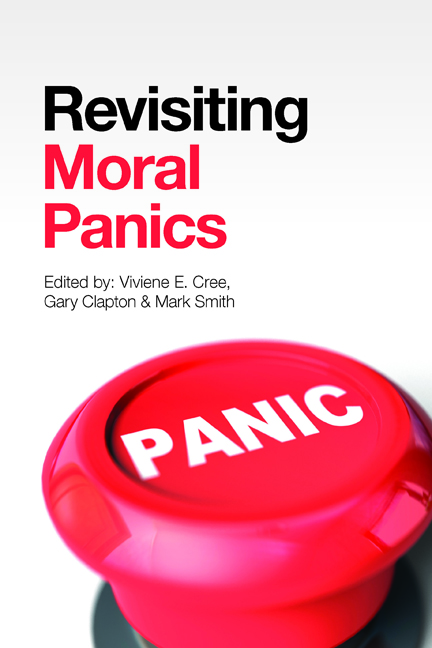Book contents
- Frontmatter
- Contents
- Contributors
- Preface
- Commentary moral panics yesterday, today and tomorrow
- Part One Gender and the family
- Part Two Moral panics in our time? Childhood and youth
- Part Three The state, government and citizens
- Part Four Moral crusades, moral regulation and morality
- Afterword the moral in moral panics
- Conclusion Moral panics and beyond
- Index
Conclusion Moral panics and beyond
Published online by Cambridge University Press: 08 March 2022
- Frontmatter
- Contents
- Contributors
- Preface
- Commentary moral panics yesterday, today and tomorrow
- Part One Gender and the family
- Part Two Moral panics in our time? Childhood and youth
- Part Three The state, government and citizens
- Part Four Moral crusades, moral regulation and morality
- Afterword the moral in moral panics
- Conclusion Moral panics and beyond
- Index
Summary
When we began, we set out to explore the utility of the concept of moral panic as a lens through which to examine contemporary social issues and anxieties. We recognised that the field was contested, as Charles Critcher identifies in his map of the territory at the beginning of this volume. We were also aware of a specific criticism that is often levelled at moral panic literature, that is, that it minimises real harm. As social workers, we took this charge seriously, and have been mindful of this even as we have raised questions around contested issues. The reaction to our work has been largely positive. The range and quality of the chapters in this volume evinces the richness and, we would suggest, continuing relevance of moral panic as a conceptual tool applied across a range of contemporary social problems. In this concluding chapter, we identify some key messages emerging from the book's contributors and, at the same time, take forward Critcher's analysis. We do so at a time when long-standing panics are resurfacing and new ones are emerging and competing for attention. We hope that the book will contribute to a new understanding of moral panics in our times.
The on-going relevance of moral panic analysis
Understanding what is going on around us through a lens of moral panic may be more relevant than ever to an understanding of social concerns, for three different but related reasons.
In The Exclusive Society, Young (1999) argues that the propensity for moral panic is located within wider structural changes in society and in the psychological responses to these. He contrasts what the historian Eric Hobsbawm (1994) identifies as the ‘Golden Age’ of the post-Second World War era, lasting until the mid-1970s, with its belief in social progress, high employment, job security, stable marriage and community, with the insecurity of late modernity. Young extends this analysis further, suggesting that ‘We live increasingly in a consensus of broken narratives: jobs lost, relationships ended, neighbourhoods left and localities transformed beyond recognition’ (Young, 2007, p 201). On a similar theme, Virilio (2005) observes some of the ways in which speed transforms our understanding of, and engagement with, a globalised world, iconic images of which, such as ‘9/11’, render unsustainable the Enlightenment conceit of believing that we might control the world through the application of science and rational thought.
- Type
- Chapter
- Information
- Revisiting Moral Panics , pp. 261 - 270Publisher: Bristol University PressPrint publication year: 2015



